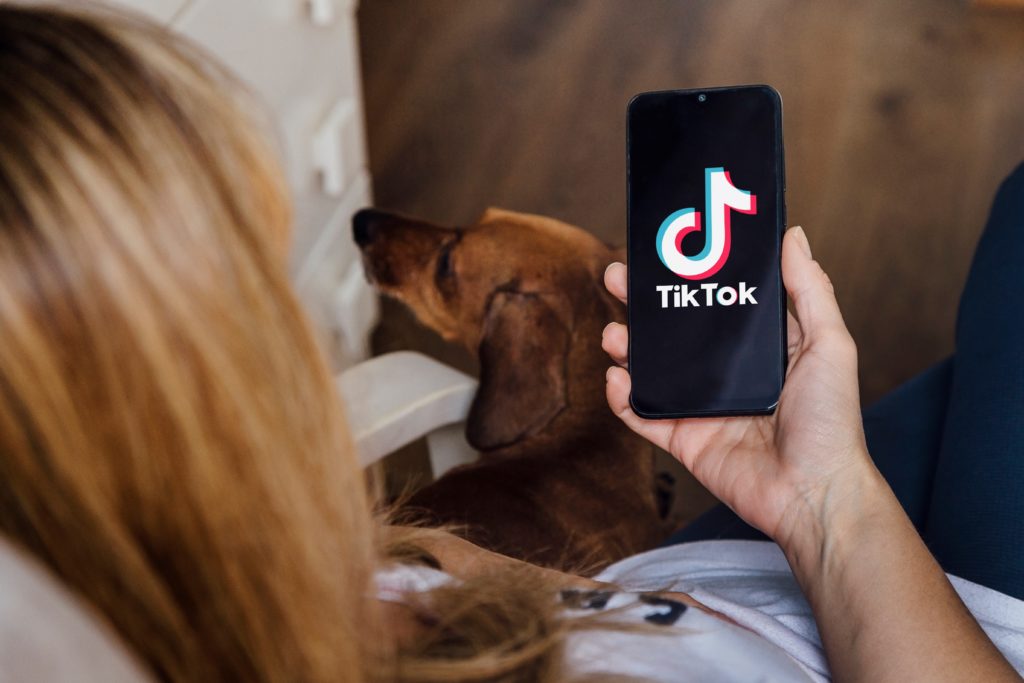Dangerous sexual challenges like the “Sex roulette” and the rise of rates of unprotected sex represent a serious threat to adolescents’ health and well-being. However, young people ask for sexuality education and if they cannot find it at school or within the family environment, they look at social media to find answers to their questions on the topic. In this context, it is essential to provide adequate information to young people on Sexual Reproductive Health (SRH) which moves from their needs and interests and to involve them in the development of sexuality education programmes.
“Sex roulette”: a new challenge among youth
A dangerous new trend, in which teenagers have unprotected orgies with strangers, is reportedly on the rise in Italy. It is called “Sex roulette” and it is the latest dangerous challenge launched on social networks involving young people. This new trend involves young people who consensually take part in sexual encounters undercover and without any protection.
The one who gets pregnant loses (Road to green 2020, 2024). The last case happened in Rome in September 2024, where a 14-year-old girl got pregnant after having participated in a “Sex roulette” (Giuffrida, 2024).
“Sex roulette” is not new and limited to Italy. The practice was born among rich billionaires in Belgrade, and it has spread rather quickly in Spain, the UK and, recently Italy (Road to green 2020, 2024). Back in 2014, Spanish newspapers raised concerns about the number of straight teenagers indulging in these kinds of “high-risk” orgies (Dazed, 2016). At that time, the increase in cases in Spain was linked to the practice of “El Muelle”, the Colombian name for this practice (Montón, 2014).
This so-called “game” has become so widespread that increasingly shocking variants have sprung up. To increase the danger, in some versions, (at least) one of the participants is HIV-positive (Dazed, 2016). The HIV carrier remains unidentifiable throughout the sexual encounter. Other parties only involve carriers of the virus, and just a few offer non-prescription blue tablets, which supposedly prevent the virus from spreading to other persons (Rae, 2016).
The growing threat of STIs and HIV in teen sexual health
The rise of these sexual practices represents a threat to young people, especially to girls who are more exposed to HIV but also other Sexually Transmitted Infections (STIs) like syphilis, herpes, chlamydia, gonorrhoea and bacterial vaginosis (WHO, HIV and AIDS, 2024). Condoms used correctly and consistently are effective methods to protect against STIs and HIV (WHO, Sexually transmitted infections (STIs), n.d.).
However, according to a recent report from the WHO, condom use among sexually active adolescents has declined significantly since 2014. The proportion of sexually active adolescents who used a condom at last intercourse fell from 70% to 61% among boys and 63% to 57% among girls between 2014 and 2022. Moreover, rates of unprotected sex remain worryingly high. Almost a third of adolescents (30%) reported using neither a condom nor the contraceptive pill at last intercourse, a figure that has barely changed since 2018.
Finally, the sexual sphere of adolescents is also influenced by socioeconomic differences. According to the report, adolescents from low-affluence families were more likely to report not using a condom or the contraceptive pill at last sexual intercourse than their peers from more affluent families (33% compared with 25%) (WHO, 2024).
The report underscores the urgent need for targeted interventions to address these concerning trends and promote safer sexual practices among young people within the wider context of equipping them with the foundation they need for optimal health and well-being (WHO, 2024).
Limiting young people’s access to pornography
The alarming trends which show the lack of awareness of many young people on Sexual and Reproductive Health (SRH) are also confirmed by another relevant data: adolescents’ access to pornography.
Adolescent pornography use has continuously increased over time and the age of first exposure to sexually explicit materials has also been getting younger (Jhe, G. B., et al., 2023). According to a recent report, 73% of 1358 teen respondents aged 13 to 17 have watched pornography online—and more than half (54%) reported first seeing pornography by the time they reached the age of 13 (Common Sense Media, 2023).
To prevent children from accessing pornography online, children’s safety groups have long been calling for age verification on porn sites (McCallum, 2022). This could include adults using secure age verification technology to prove that they possess a credit card and are over 18, or having a third-party service confirm their age against government data (McCallum, 2022).
“People have to show ID before purchasing pornography, alcohol and cigarettes, or before watching an 18 film at the cinema. We want to carry these same protections into the online environment”.
– McCallum, 2022
Implementing age verification for online protection of minors
Concerning this solution, Italy and Spain have recently proposed to adopt age verification methods to reduce the consumption of pornography by minors. The age verification mechanism is part of a comprehensive plan that the Spanish government wants to turn into a comprehensive law for the protection of minors on the Internet, which will address different areas, not just the consumption of pornography from an early age (Euronews, 2024).
Aligned with this proposal, the Italian Communications Regulatory Authority (AGCOM) has recently adopted a new draft regulation which sets out the technical modalities for verifying the age of web users. The text not only establishes the obligation to verify the age of 18 to access platforms with pornographic content but also establishes the same constraint for accessing gambling and betting websites. To have access to porn platforms it will be necessary to log in with the Public Digital Identity System (SPID) or with the electronic ID card (Garau, 2024).
If education does not provide answers, TikTok will

Young people ask for sex education. If they cannot find it at school or within the family environment, adolescents look at social media to find answers to their questions on the topic.
TikTok is the leading platform for providing information on sexuality education from a wide range of perspectives (Giancipoli, 2024). Obstetricians, gynaecologists, and other healthcare professionals have actively engaged in TikTok as popular content creators, providing science-based content, answering questions posed by other users, and responding to incorrect viral videos (Fowler et al., 2021).
As regards the themes explored on the platform, a recent report highlighted that female anatomy was the most frequently addressed topic, followed by sexual pleasure within which discussions of the female orgasm and arousal constituted the most common subtheme. Other common themes include contraception and sexual health.
These sought-after topics may be incongruent with those presented in standard school- or home-based sex education or interactions with healthcare providers, and this disconnect suggests opportunities for healthcare providers and educators to initiate conversations or offer resources on these themes as part of routine interaction (Fowler et al., 2021).
TikTok, therefore, offers a novel opportunity to make up for shortcomings in sex education and convey sexual health information to adolescents. However, the ever-growing quantity of content available on TikTok makes responding to all misinformation impractical, and there is no guarantee a user will ever encounter these corrective videos (Fowler et al., 2021).
How adults can support youth development
While regulatory and technological initiatives are essential, they are not sufficient on their own. There is also a need to educate and empower children to navigate the digital environment with critical reasoning skills, media literacy, and information on healthy relationships. Parents, careers, teachers, communities, and others who work with children should be trained and supported to assist them in this endeavour (UNICEF, n.d.).
Adults shouldn’t feel ashamed of talking about sex and relationships, regardless of the age of the child. There’s an appropriate way to talk about these topics according to the age, needs and level of maturity of every child since when they are very young.
Evidence-based tools and educational materials can support parents and people working in contact with children in developing competencies in addressing and discussing these topics. The UN’s global guidance indicates starting Comprehensive Sexuality Education (CSE) at the age of 5 when formal education typically begins. Finally, there are multiple dimensions of SRH to be explored, namely relationships, the relation between values, culture, rights and sexuality, gender, violence, the human body, sexuality and sexual behaviours (UNWOMEN, 2018).
Responding to young people’s needs
Beyond national and international standards, one crucial consideration should guide the design of any sexuality education programme and/or course: the needs identified by young people and what they want to hear about. There is a divide between the priorities of the adults who develop sexuality education programmes and those of the young people who are taught about it.
Adults want to protect young people from STIs, violence, cyberbullying, sexual assault and so on. Young people (who are often not consulted in the development of programmes) want to know how sex and relationships work. They want explicit technical knowledge about sexual practices, to discuss relationships, to know how to break up with someone or to tell someone they like them, and to give pleasure to their partners (Action Canada, n.d.).
STI prevention messages are important, but if we don’t answer young people’s questions, or if we don’t try to establish links between the two concepts, the information may not be assimilated. Moreover, much of the sex education that young people receive is aimed at preventing negative outcomes. Few teachers emphasise that sexuality can be positive, joyful, comfortable and empowering (Action Canada, n.d.).
Without a balance between risks and benefits, we lose the opportunity to help create a culture of consent and reach young people who are curious and hungry for information that is crucial to a healthy life (Action Canada, n.d.).
A new approach to sexuality education
The widespread phenomenon of sexual challenges across countries raises concerns about the level of sexual awareness of young people, especially with regard to (STDs). On the other hand, young people ask for more information on sexual-related topics, and they look for answers using the tools they have at their disposal. In context, it is essential to provide sexuality education close to their needs. Policymakers, educators and healthcare providers should prioritize adolescent sexual health by:
- Investing in comprehensive sexuality education: implementing and funding evidence-based sexuality education programmes in schools that cover a wide range of topics, including contraception, STIs, consent, healthy relationships, gender equality and LGBTQIA+ (lesbian, gay, bisexual, transgender, queer, questioning, intersex, asexual, plus) issues.
- Enhancing access to youth-friendly sexual health services: ensuring that adolescents everywhere have access to confidential, non-judgmental and affordable sexual health services that meet their specific needs and preferences.
- Promoting open dialogue: encouraging open and honest conversations about sexual health within families, schools and communities to reduce stigma and increase awareness.
- Training educators: providing specialized training for teachers and healthcare providers to deliver effective and inclusive sex education. Such resources should be made available in both school and out-of-school settings.
- Conducting further research: investigating the underlying reasons for the decline in condom use and the variations in sexual health behaviours across different populations to inform targeted interventions. This includes analysing messages and other content adolescents are exposed to across social media and online platforms, given their reach and impact (WHO, 2024).

Everyone has an important role in promoting a dialogue on sexual-related topics which is science-based content, and which moves from a meaningful involvement of young people. In this sense, Humanium is on the frontline in this common goal and through its work, it raises awareness of these issues as well as tries to promote tools and best practices. If you want to contribute to our cause, consider making a donation, volunteering or becoming a member.
Written by Arianna Braga
References:
Action Canada (n.d.). Ce que les jeunes personnes veulent et ce dont elles ont besoin en matière d’éducation à la sexualité. Retrieved from Action Canada pour la santé & les droits sexuels at https://www.actioncanadashr.org/fr/resources/sexual-health-hub/education-sexuelle/ce-que-les-jeunes-personnes-veulent-et-ce-dont-elles-ont-besoin-en-matiere-deducation-la-sexualite, accessed on 9 November 2024.
Common Sense Media (2023). New Report Reveals Truths About How Teens Engage with Pornography. Retrieved from https://www.commonsensemedia.org/press-releases/new-report-reveals-truths-about-how-teens-engage-with-pornography, accessed on 7 November 2024.
Dazed (2016). ‘Sex roulette’ is the disturbing new trend for Spanish teens. Retrieved from Dazed at https://www.dazeddigital.com/artsandculture/article/31080/1/sex-roulette-is-the-disturbing-new-trend-for-spanish-teens, accessed on 3 November 2024.
Euronews (2024). Spanish government to regulate online porn access to protect minors. Retrieved from Euronews at https://www.euronews.com/2024/01/16/spanish-government-to-regulate-online-porn-access-to-protect-minors, accessed on 7 November 2024.
Fowler, L. R. et al. (2021). Sex Education on TikTok: A Content Analysis of Themes. Retrieved from the University of Houston Law Centre at https://www.law.uh.edu/news/fall2021/1222TikTok.asp, accessed on 9 November 2024.
Garau, C. (2024). Spid obbligatorio per accedere ai siti porno, di scommesse e gioco d’azzardo dal 2025: ecco le novità dell’Agcom. Retrieved from Brocardi.it at https://www.brocardi.it/notizie-giuridiche/spid-obbligatorio-accedere-siti-porno-scommesse-gioco-azzardo-2025/4601.html, accessed on 7 November 2024.
Giancipoli, D. (2024). Educazione sessuale, i giovani la vogliono a scuola e ne parlano su TikTok. Retrieved from Alley Oop – Il Sole 24 Ore at https://alleyoop.ilsole24ore.com/2024/02/26/educazione-sessuale/?refresh_ce=1, accessed on 7 November 2024.
Giuffrida, S. (2024). Sex roulette, l’ultima folle challenge tra giovanissimi: 14enne resta incinta. Retrieved from Repubblica at https://roma.repubblica.it/cronaca/2024/09/23/news/sex_roulette_challenge14enne_resta_incinta-423517414/, accessed on 3 November 2024.
Jhe, G. B., et al. (2023). Pornography use among adolescents and the role of primary care. Retrieved from Family medicine and community health, 11(1), e001776 at https://doi.org/10.1136/fmch-2022-001776, accessed on 7 November 2024.
McCallum, S. (2022). Can age verification stop children seeing pornography? Retrieved from BBC at https://www.bbc.com/news/technology-63794796, accessed on 7 November 2024.
Montón, L. (2014). El Muelle: el nuevo y arriesgado juego sexual de los adolescentes. Retrieved from La Vanguardia at https://www.lavanguardia.com/salud/20140307/54402096960/muelle-juego-sexual-adolescentes.html, accessed on 3 November 2024.
Montón, L. (2014). El Muelle: el nuevo y arriesgado juego sexual de los adolescentes. Retrieved from La Vanguardia at https://www.lavanguardia.com/salud/20140307/54402096960/muelle-juego-sexual-adolescentes.html, accessed on 3 November 2024.
Road to green 2020 (2024). Minori, allarme di medici ed esperti: tra “Sex roulette”, “Calippo tour” e “Chinotto tour” spopolano giochi e sfide basati su rapporti sessuali con sconosciuti. Retrieved from Road to green 2020 at https://roadtogreen2020.com/minori-allarme-di-medici-ed-esperti-tra-sex-roulette-calippo-tour-e-chinotto-tour-spopolano-giochi-e-sfide-basati-su-rapporti-sessuali-con-sconosciuti/?fbclid=IwY2xjawGUZWRleHRuA2FlbQIxMQABHbFseBcyIkS1YzS9schK8ChrxoM9KZCt9eZ5bmpRXmH8pyXyq7SUCSW6ug_aem_cBPxY2fTjdxeBQOk2WWKjA, accessed on 3 November 2024.
UNESCO (2023). Comprehensive sexuality education (CSE) country profiles. Retrieved from UNESCO at https://unesdoc.unesco.org/ark:/48223/pf0000384494, accessed on 7 November 2024.
UNICEF (n.d.). Protection of children from the harmful impacts of pornography. Retrieved from UNICEF at https://www.unicef.org/harmful-content-online, accessed on 7 November 2024.
UNWOMEN (2018). International technical guidance on sexuality education. Retrieved from UNWOMEN at https://www.unwomen.org/sites/default/files/Headquarters/Attachments/Sections/Library/Publications/2018/International-technical-guidance-on-sexuality-education-2018-en.pdf, accessed on 7 November 2024.
WHO (2024). Alarming decline in adolescent condom use, increased risk of sexually transmitted infections and unintended pregnancies, reveals new WHO report. Retrieved from WHO at https://www.who.int/europe/news/item/29-08-2024-alarming-decline-in-adolescent-condom-use–increased-risk-of-sexually-transmitted-infections-and-unintended-pregnancies–reveals-new-who-report, accessed on 3 November 2024.
WHO, HIV and AIDS (2024.). HIV and AIDS. Retrieved from WHO at https://www.who.int/news-room/fact-sheets/detail/hiv-aids?gad_source=1&gclid=Cj0KCQjwvpy5BhDTARIsAHSilyl-gGlp8SvPCh-cCHolxnEkPTn9oDBsuFe4fUMIUMu85aSFqsvPMAAaAkRyEALw_wcB, accessed on 3 November 2024.
WHO, Sexually transmitted infections (STIs) (n.d.). Sexually transmitted infections (STIs). Retrieved from WHO at https://www.who.int/health-topics/sexually-transmitted-infections#tab=tab_1, accessed on 3 November 2024.


